

Warm Tip: If you want to know more details about equipment, solutions, etc, please click the button below for free consultation, or leave your requirements!
Chrome ore is a mineral commonly used in metallurgy. The industrial grade of primary ore is ≥8%-10%, and the industrial grade of placer ore is ≥3%.
Generally, three kinds of beneficiation processes of gravity separation, magnetic separation and flotation are used in the chrome processing. Below we would introduce them separately.
Gravity separation is a method of beneficiating ore according to the difference of mineral density. It has a wide range of applications in chrome ore beneficiation and is suitable for the chrome ore which is easy to separate.
The advantage of gravity separation lies in its wide range of ore sizes. It can separate coarse and large ore that cannot be processed by other methods. Generally speaking, gravity separation equipment is relatively simple in structure, easy to manufacture, does not require chemicals in production, and has little environmental pollution.
There are several specific processes and equipment for gravity separation:
Jig belongs to deep trough separation, the applicable particle size range is generally 35-0.1mm. The equipment processing capacity is large, the operation is simple, and the application is wide. It is suitable for processing coarse-grained minerals with uneven inlays, and can obtain the final product in a single separation.
.jpg)
It belongs to the slant flow separation; the processing particle size range is generally 2-0.03mm. The equipment processing capacity is large, the operation is simple, and the application is wide.
The slurry does rotary motion in a long spiral groove and generates inertial centrifugal force, thus promoting the zoning of light and heavy minerals on the surface of the groove. The light minerals are thrown to the outside and the heavy minerals are on the inside, thereby separating them and continuously discharging. .
The disadvantage of spiral chute is that the concentration ratio of the beneficiation is low, and it is generally used as roughing equipment, and the final concentrate product needed to be obtained by combining with the shaking table to get the final product.
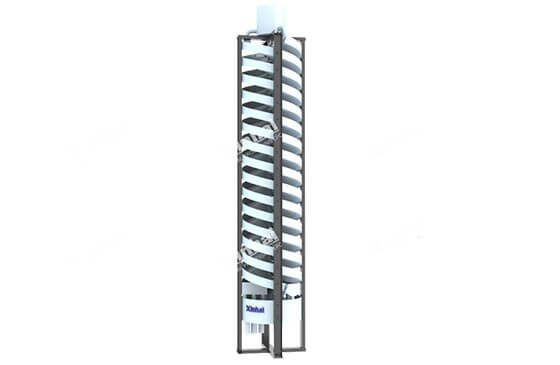
The shaking table is equipment for separating fine-grained ore, and the processing particle size range is generally 3-0.019mm. The separating is realized by the combined action of the longitudinal and lateral water flow on the bed surface.
The advantage of the shaking table is that it has a high beneficiation enrichment ratio, and is generally used as a concentrating equipment to directly obtain the final concentrate.
The disadvantage is that the processing capacity of shaking table is too small, the efficiency is low, need many machines and large floor space.
In actual application, in order to improve the separating effect, the materials are generally divided into several different sizes to separate.
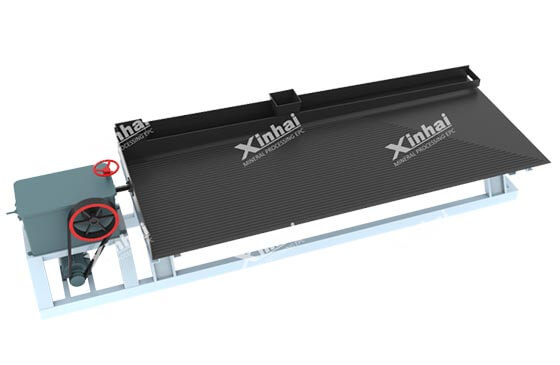
Weak magnetic separation, medium magnetic separation, and strong magnetic separation are all used in chrome processing.
Weak magnetic separation can remove magnetite, increase the chrome-iron ratio of the concentrate, and further enrich and get qualified chromite concentrate products. Especially for the unqualified concentrate containing a small amount of magnetite in the chromite concentrate after the gravity separation, weak magnetic separation is of great significance.
Chromite is weak magnetic, so strong magnetic separation can be used. In the beneficiation of chromite ore, we can use a medium magnetic machine to remove the magnetite, and then use a strong magnetic machine to recover the chromite and separate the gangue minerals.
Especially when fine-grained minerals are not suitable for gravity separation, we can consider magnetic separation.
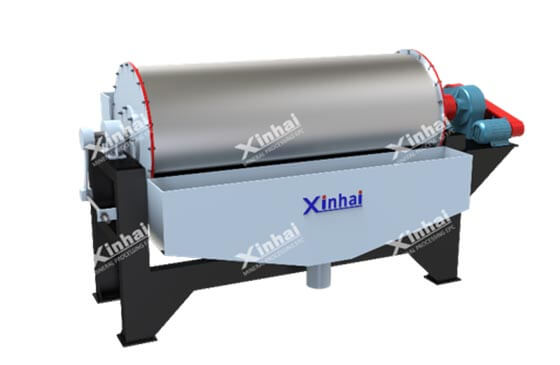
The flotation process is mainly used to process fine-grained chromite. Flotation requires the use of flotation machines and the addition of flotation reagents.
The process is relatively complicated, the power consumption and the cost of the reagent are high. Generally, it will be considered only when the gravity separation and strong magnetic separation treatment effects are not good.
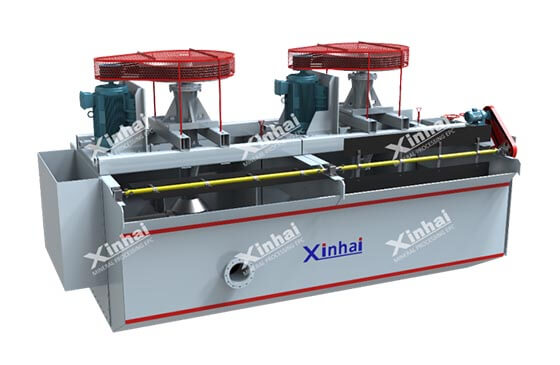
Crushing and screening operation: Using two-stage one-closed-circuit crushing process and the size of the crushed product is -20mm.
Grinding operation: Rod mill and linear vibrating screen are used to form a closed-circuit grinding process, with a grinding fineness of -50 mesh 100%.
Separating operation: Using spiral chute for roughing and shaking table for concentrating process. Grinding products are divided into two different parts by particle size, 50-100 mesh and -100 mesh, and then beneficiated separately. In the end we can get mixed concentrate products.
Dewatering of Concentrate: Using the sedimentation tank for dewatering, and returning the backwater to reuse.
Dewatering of tailings: The tailings directly enter the tailings pond, and the backwater is returned to reuse.
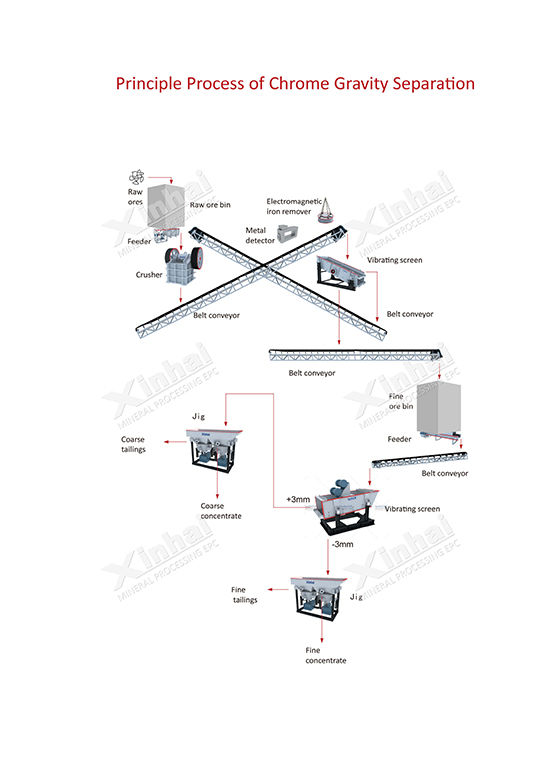
![]()
The above is the basic beneficiation process for chrome ore. In the actual production, we can refer this article to choose a basic process, but mineral processing test and technicians' advice are necessary too.
If you have any questions about this article or need more details, please contact our online customer service or leave a message below, we'll contact you as soon as possible.
1Chrome Mining Processes and Flowsheet
 0
0
 3465
3465
23 Common Chrome Mining Processes
 0
0
 4491
4491


What Are the Differences Between CIP and CIL?
 11110
11110
 0
0